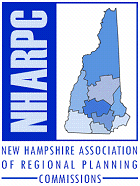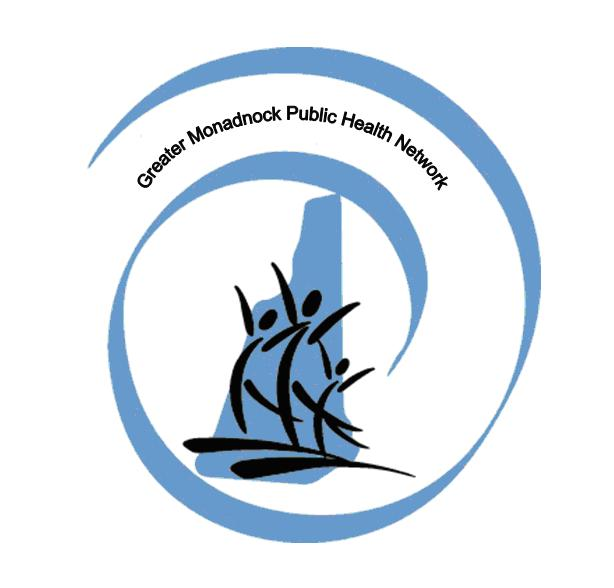The information contained in this article is not intended as legal advice and may no longer be accurate due to changes in the law. Consult NHMA's legal services or your municipal attorney.
Over several decades, community planners have integrated an ever-expanding set of issues into their purview. From land use and environmental quality, water and wastewater, transportation, housing, energy, solid waste disposal, recreation, economic development, emergency preparedness – the list goes on. With time, as complexities emerge and additional challenges present themselves, professional planners are compelled to answer the call. A case in point is the response to changing demographics and climate change. Our population is aging – and rapidly so. At the same time, we see an increasing number of high-heat days per year, higher rates of vector borne disease, and more frequent and intense heavy weather events. These and other dynamics have brought about greater attention to the ever-growing field of public health planning. This article focuses on several efforts undertaken by the Southwest Region Planning Commission (SWRPC; www.swrpc.org) which exemplify the trend in contributions municipal and regional planners in New Hampshire are providing to this emerging genre of community planning.
Partnership for Improving Community Health
In 2014, Cheshire Medical Center, located in Keene, New Hampshire and serving 30+ communities in the Monadnock Region, took a leadership role in securing support from the national Centers for Disease Control and Prevention for undertaking the Partnership for Improving Community Health (PICH). This 3-year initiative included three areas of focus: access to healthy food, tobacco use reduction, and promoting active transportation. Several organizations were assembled to form the partnership and contribute to the various components of the overall effort. SWRPC was assigned the task of promoting active transportation and influence community design for the purpose of providing improved access to bicycle and pedestrian opportunities. Areas of focus included Complete Streets (https://smartgrowthamerica.org/program/national-complete-streets-coalition/ and https://www.transportation.gov/mission/health/complete-streets), Safe Routes to School (https://www.transportation.gov/mission/health/Safe-Routes-to-School-Programs) and the Rack-It-Up! program designed to expand the number of bicycle racks in town centers and other appropriate locations.
Individual communities were recruited to participate based on their interest and included those with larger populations (e.g., Keene, Swanzey, Jaffrey) as well as those more rural in character (Harrisville; <1,000 population). For its role in the project, SWRPC developed templates for Complete Streets guidelines, provided technical support in developing Complete streets policies to meet the preferences of individual municipalities, and worked with several schools in preparing Safe Routes to School Action Plans. In all, the PICH effort resulted in the adoption of Complete Streets policies in nine communities in Southwest New Hampshire (more than any other region in the State), the completion of 14 Safe Routes to School Action Plans, and installation of bike racks providing an additional 512 bicycle parking spaces.
Community Health Improvement Plan
In 2015, New Hampshire adopted its first-ever State Health Improvement Plan. Once completed, the State’s 13 regional public health networks and advisory councils were charged with developing regional scale Community Health Improvement Plans (CHIP) patterned after the State Plan. The Greater Monadnock Public Health Network and Advisory Council approached SWRPC for technical assistance in developing the Monadnock variant of the CHIP. In doing so, SWRPC utilized its skills in data collection and analysis, facilitation and collaboration, and overall familiarity with the planning process. Vital to the success of effort was the participation of a full range of practitioners and stakeholders involved in public health related disciplines comprising the Leadership Council for Healthy Monadnock. The initial version of the Monadnock Region CHIP was completed in 2016 and, at the time of this writing, SWRPC is completing the 3-year update of this document.
Climate and Health Planning
This form of public health planning focuses on the intersection of climate change and human health. Through support from the Centers for Disease Control and Prevention, and administrative oversight provided by the New Hampshire Department of Health and Human Services and Cheshire County, the Greater Monadnock Public Health Network enlisted the support of SWRPC and Antioch University New England for technical assistance in climate and health planning activities. The first of two such efforts involved the development of a Climate and Health Adaptation Plan (CHAP) in 2017 which evaluates the impact of severe precipitation on human health. The project involved study of the increase in frequency and intensity of heavy weather events resulting in flooding, extreme winter and ice storms, etc., and associated impacts on human health.
A related project is through a program entitled Building Resilience Against Climate Effects (BRACE). The BRACE initiative represents a deeper dive into what began with the CHAP. In Southwest New Hampshire, the focus is again on heavy precipitation events and human health. The Planning Phase involved identifying those most vulnerable including individuals living in low-lying flood prone areas, elderly, and isolated populations. In addition, this phase included evaluating and prioritizing interventions designed to mitigate impacts on human health. The Implementation Phase takes the highest ranked interventions and puts them into action. Implementation activities under BRACE are currently underway and are centered on education and awareness through both small group sessions targeted to vulnerable populations and a multi-media outreach campaign designed for a broader audience. It should be mentioned that a parallel effort under the BRACE program is also on-going in the Seacoast Region of New Hampshire focused on the increasing number of high heat days.
Age-Focused Planning
The average age of New Hampshire residents ranks 2nd highest in the nation. Like other areas of the State, in Southwest New Hampshire the population aged 65 years and older is growing faster than any other age group. Trends indicate this segment of the population is expected to grow from 15% to over 26% over the timeframe 2010-2040. At the same time, we have fewer young people. In the decade ending in 2015, enrollment in the region’s K-12 public schools declined by 17%. How will this impact school budgets? Will some schools close? Similarly, during this time period, our young adult population aged 24-39 decreased by 15%. How does this impact our workforce? Forecasts suggest a continued decline in the ratio of young adults over time. By 2040, there will be more than twice as many seniors in comparison to young adults than in 2000. What do these trends mean for our ability to meet the needs of an aging population? Will we have sufficient numbers of younger people to look after our seniors and meet workforce needs after they retire? Will our services and health care facilities have the capacity to respond? Is our housing stock appropriate to meet the needs of an older population while, at the same time, attract younger residents?
Data and questions such as these have led SWRPC to undertake an Age-Focused Planning project that directly responds to two fundamental questions: 1) What should our communities and institutions be doing to be better prepared for these changing demographics?; and, 2) What can we do to proactively influence these trends in a positive way? SWRPC has partnered with Cheshire Medical Center and others locally, and with support from the Tufts Health Plan Foundation and Federal Highway Administration are leading a 2-year effort to explore these issues.
The project is, in large part, patterned after a similar effort championed by the Southern New Hampshire Planning Commission which is two years ahead of SWRPC’s effort. The 2-year project is currently at the halfway point. Year 1 involved data collection through research, use of a survey, and a number of focus group sessions. A project work group of practitioners and stakeholders is providing oversight and guidance. Deliverables are to include: 1) a regional report providing trends, analysis, findings, recommendations, and a variety of suggested action steps for consideration by a full range of multi-sector stakeholders; and 2) individual profiles of SWRPC’s 33 member communities providing pertinent data and suggested strategies for use in future planning and related activities.
Conclusion
Planners are adept at responding to change. As described in this article, the Southwest Region Planning Commission has raised its level of activity in the area of public health planning. By no means is SWRPC alone in this way. Municipal and regional planners and others in New Hampshire and beyond find themselves increasingly involved in such efforts, and this trend is likely to continue due to a changing world. The more a community planner participates with experts in the field of population and public health, the more s/he recognizes that we are working toward similar goals – that is, striving to make communities better places to live, work and play.
Collaboration is Key: A Testimonial
By Eileen Fernandes
The Greater Monadnock Public Health Network (GMPHN), one of thirteen regional networks in New Hampshire, is a community health and safety collaborative which works to enhance and improve public health-related services. Financed under an agreement with the State of New Hampshire, Department of Health and Human Services, Division of Public Health Services, with funding from the Centers for Disease Control and Prevention, GMPHN is led by the government of Cheshire County in partnership with Cheshire Medical Center. GMPHN strives to increase collaboration and planning across municipal boundaries. Membership includes representatives from the 33 towns in the Monadnock Region, regional government, the profit and non-profit sectors, public and private education, faith-based, and community members.
The success of GMPHN is dependent on diverse representation among our members. One such example is the relationship between GMPHN and Southwest Region Planning Commission (SWRPC). Beginning in 2009 when we first approached SWRPC to assist with updating our regional Point of Dispensing Plans, we recognized that they had a skill set that was missing from our previous efforts to enhance our public health planning and response. Given their work to support their member municipalities with emergency operations and hazard mitigation planning, it was apparent that they had a level of planning expertise that would only enhance our current efforts. SWRPC’s expertise includes access to data, the ability to analyze information and provide visual presentation that is easily understandable and readable, knowledge and awareness of regional, state and federal requirements, and access to regional resources.
Since that time, there have been several examples of maximizing the strengths and abilities of both GMPHN and SWRPC, along with other stakeholders, that is contributing to positive public health outcomes for the region. Our successful collaboration led to adoption of the region’s first Community Health Improvement Plan, the first regional Climate and Health Adaptation Plan, and most recently the development of a BRACE (Building Resilience Against Climate Effects) educational curriculum. With limited resources, it is imperative that organizations find opportunities to collaborate. GMPHN has a strong history of engaging diverse partners and SWRPC brings a heightened level of planning expertise. Working together has demonstrated a true recipe for success. With SWRPC expanding its reach into greater public health planning, there is a brighter future for our region.
Tim Murphy is Executive Director with Southwest Region Planning Commission. He can be reached via email at tmurphy@swrpc.org or by phone at 603.357.0557. Eileen Fernandes is Director of Operations with the Center for Population Health at Cheshire Medical Center, a Dartmouth-Hitchcock Health Affiliate. She can be reached at efernandes@cheshire-med.com or by phone at 603.354.5454 x2130.

